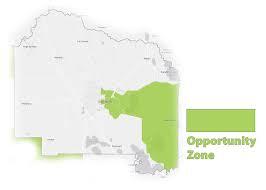
The Federal Opportunity Zone is for poor communities with a future under certain conditions, including the opportunity for new investments that can tap into some tax benefits. A community has to be nominated by the state and approved by the Secretary of the US Treasury through the office of the Internal Revenue Service. The scheme is a way to make money by investing in the community as a partnership or corporation in the rural area labeled as Federal Opportunity Zone and where there are resources to make money from funding the scheme.
Opportunity zone communities have low income, and the population census tracts approve certain areas. As a result, few spots are given to the State government, allowing them to forward some areas as tracts for official designations. They submit the certification and designation to the IRS office, which will deliver the delegation to the treasury secretary.
The US census tracts state that there are 8,762 tracts, making up 12% of the entire population. The nomination is made by each state governor and four territories, including the DC mayor, and signed by the US Department of Treasury. However, communities declared as an Opportunity Zone cannot be removed. As earlier stated, the opportunity is for low-income neighborhoods with high poverty rates and high levels of unemployment. However, the scheme is still limited to communities with benefits. The communities start from 1 to 10, labeled according to state, with 10 as the highest status. The program has one-third of the Opportunity Zones sited on three tracts meaning they have less investment opportunity, while more than 28% categorized in tract three have most of the investment. The pattern follows the same trick as non-designated tracts with a little target on lower-investment areas.
The level of socioeconomic standards determines the most qualified Opportunity Zones. These areas suffer more than non-designated tracts in home values, rents, and homeownership rates. The victim areas are occupied more by Hispanic and black but less white. They have the same ages with non-designated areas but lower levels of education.
Lastly, the areas are selected by carefully observing the changes between 2000 to 2016. Sometimes the investment leads to the displacement of low and moderate-income residents, especially in communities with high levels of socioeconomic change. In addition, due to the massive change, it will be less beneficial to needy residents. The socioeconomic change is determined by the changes in the number of bachelor’s degrees or higher, the number of non-Hispanic, white residents, median family income, and average house value.
As an investor, you can place capital on any asset class, sector, or geographic region. However, the selection is based on demographics, seasonality, tax incentives, growth, and ethical ideology, further narrowing the investment chances.
The opportunity fund arranged by the federal government is to give tax benefits to investors that incentivize investment in selected low-income communities. Each area is set with the available tax benefits. However, there are criteria for cooperation or partnership to meet to be qualified. These investors must file Form 8996, which contains the annual federal income. Once a designated area is approved for investment, investors are to invest more than 90% of their assets in the designated area to enjoy tax incentives.
Some investors can invest in real estate and business in such areas if they meet certain conditions which approve them under a qualified opportunity fund. For instance, investors must have new or substantially improved investments in an opportunity fund. They are not allowed to purchase properties without significantly improving them. Those planning to enhance the real estate investment substantially must use more than the cost value of the building and should be completed within two and a half years.
FOR MORE INFORMATION ON HOW PAT RASKOB CAN BEST HELP YOU WITH YOUR TAX FILING NEEDS, PLEASE CLlICK THE BLUE TAB ON THIS PAGE.
THANKS FOR VISITING.
Pat Raskob